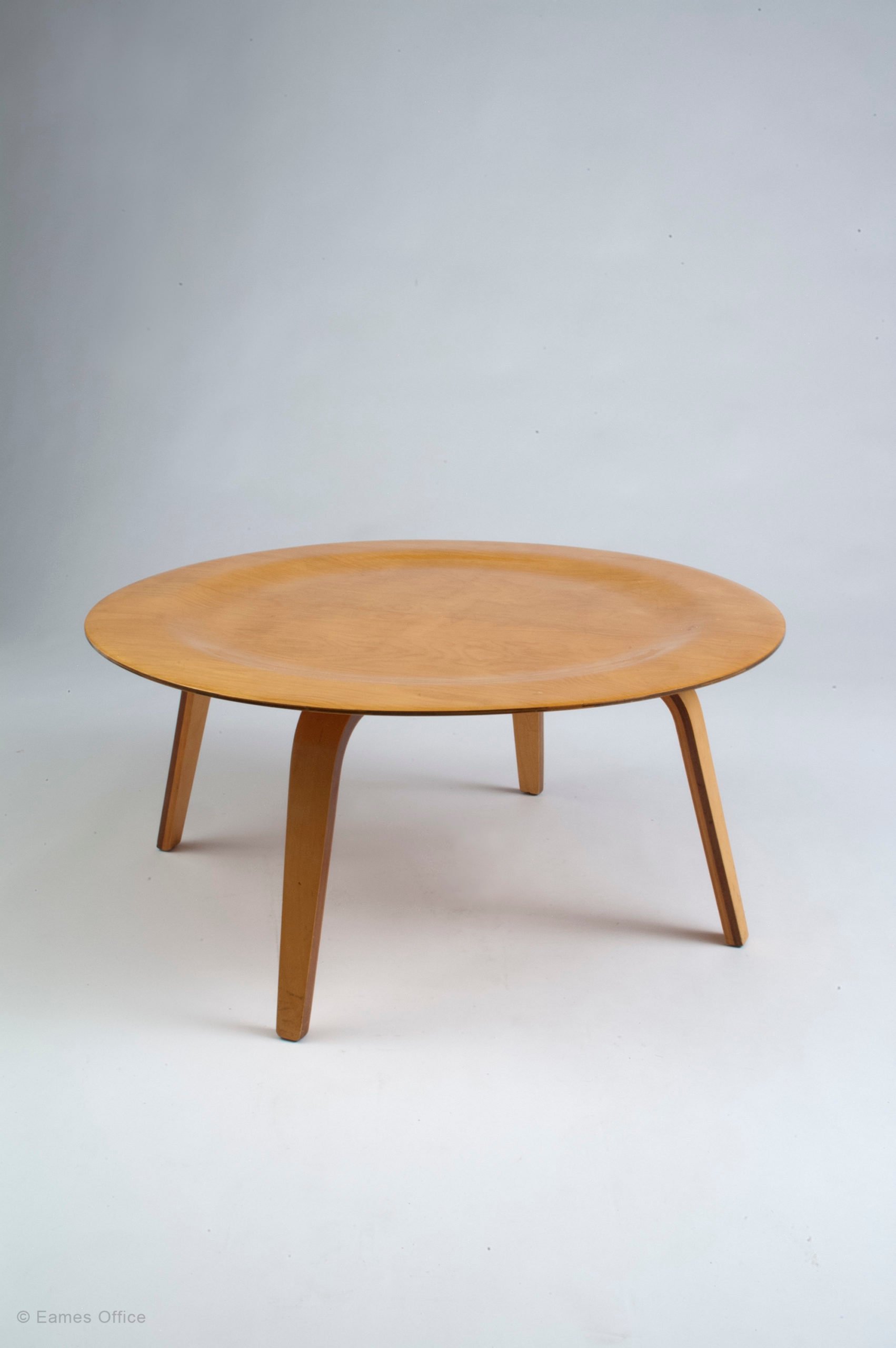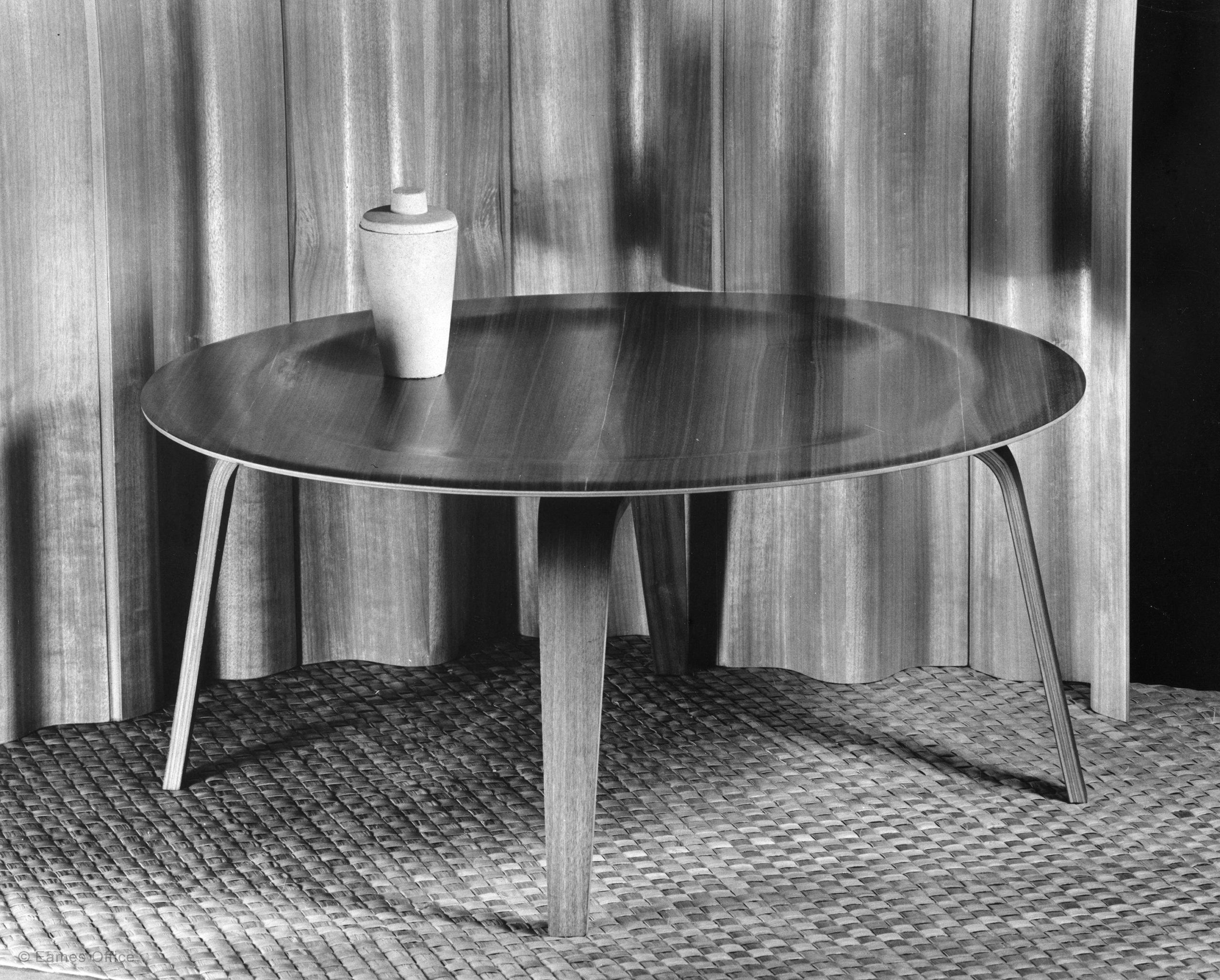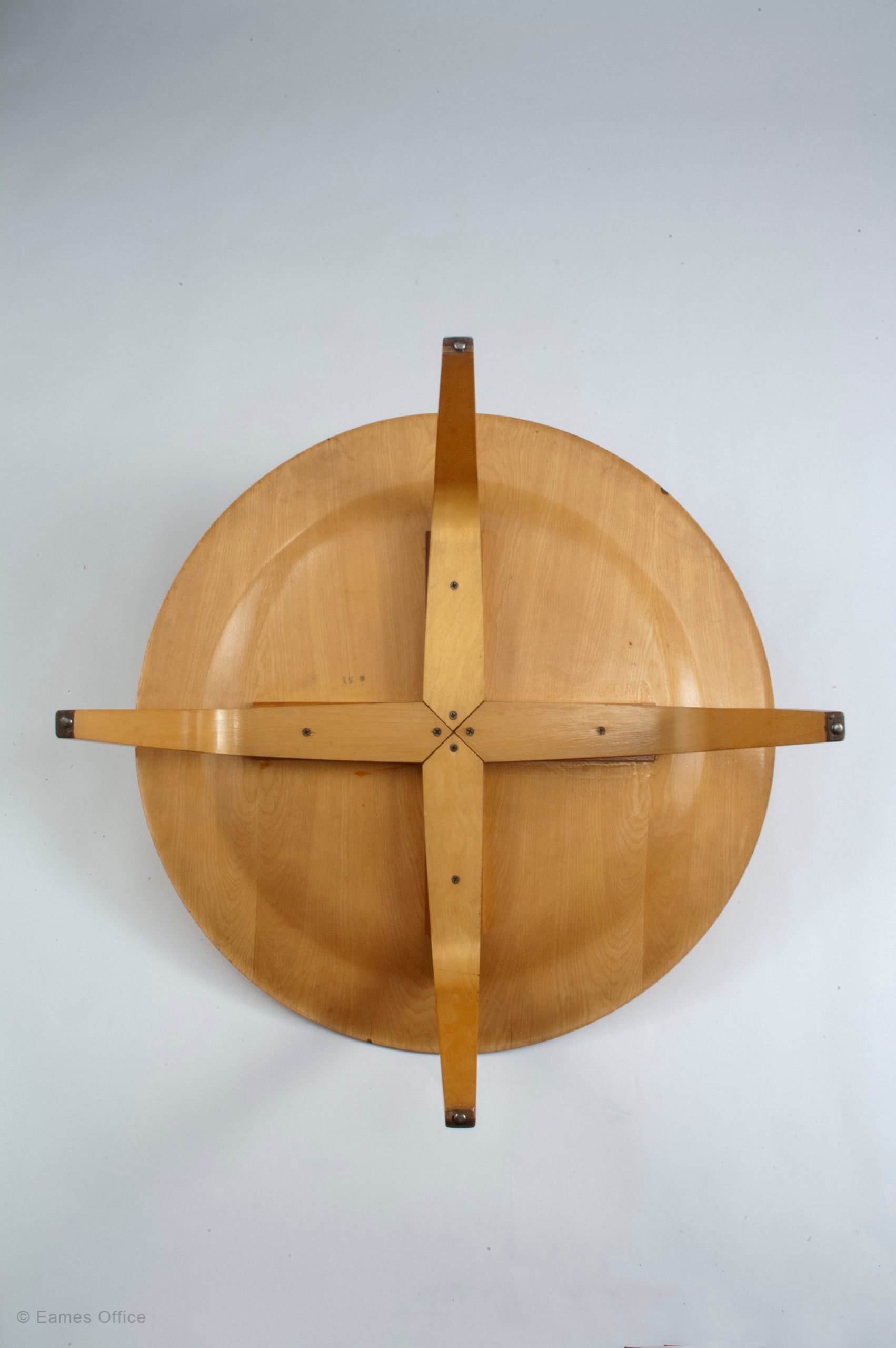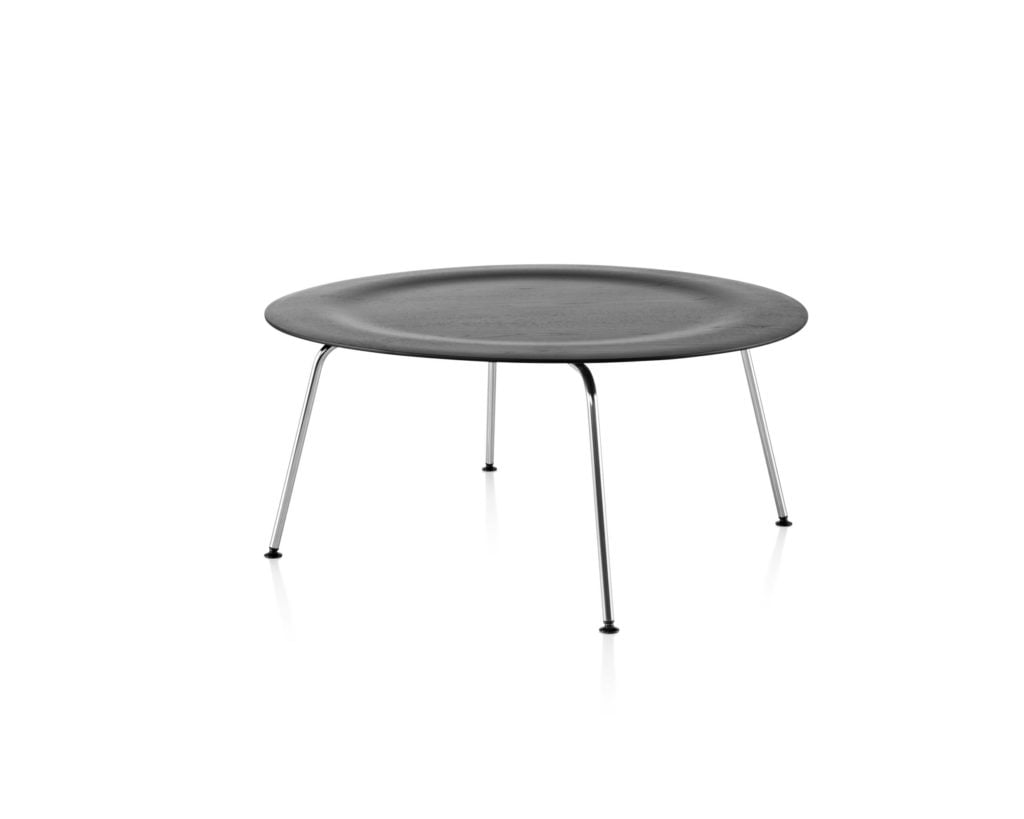Additional Information
This is a furniture system of two pieces: they used the same tops with either bentwood or steel rod bases. The bases have what may appear to be a visual feature, which creates a shadow line all around the edge of the center of each table. The centers are molded to be lower than the edges because molding the plywood top this way made the top stronger, more rigid, and resistant to warping. Because of this molding feature, they could offer the strongest possible top at the lightest possible weight.
Early sales personnel would sometimes stand on the tops to show astonished customers just how strong these lightweight tables are.
An analogy is useful for understanding this design detail. Consider a piece of corrugated metal, a thin sheet of metal molded with regular ridges. The corrugated sheet of metal has ridgelines throughout, where the metal has been molded or pressed to go up and down. That corrugated metal piece is stronger and more rigid in that form than it was when it was a flat piece of metal.
This Eames design concept enhances that effect. A piece of corrugated metal is stronger and more rigid in only one direction. Because the round Eames table has a round molded center, it is more rigid and more durable in all directions at once. And it only weighs 18 pounds.
Explore Similar Works
History
Related Products
Browse a curated selection of Eames Office products we think you’ll love
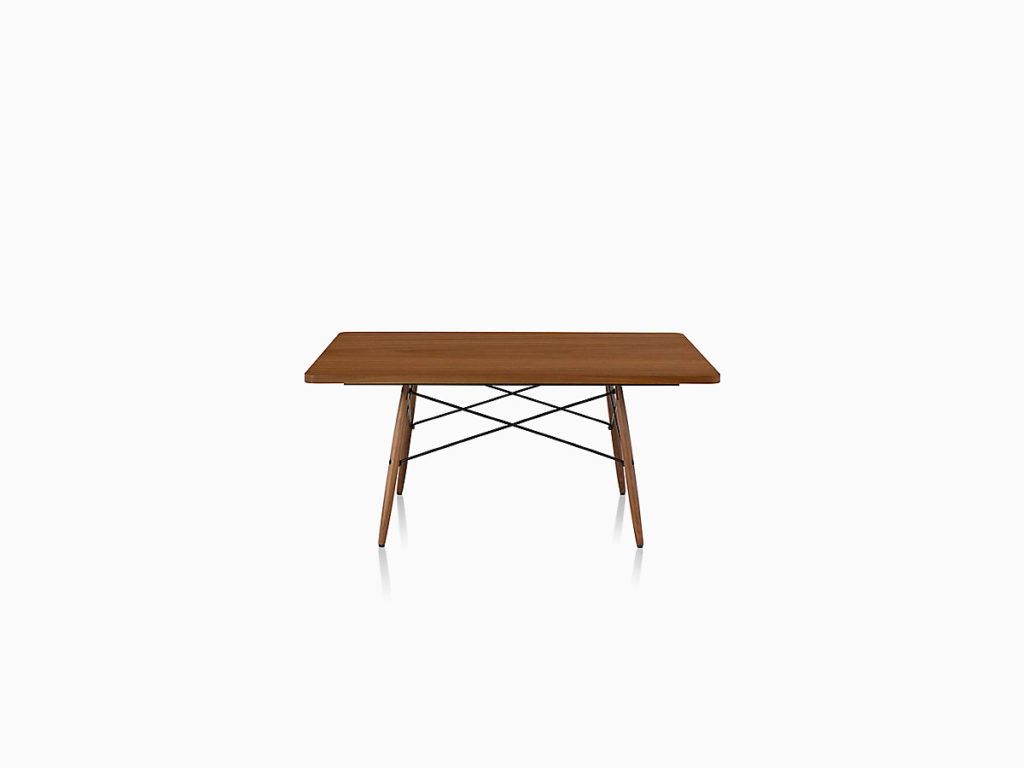
Eames® Coffee Table
$995.00
